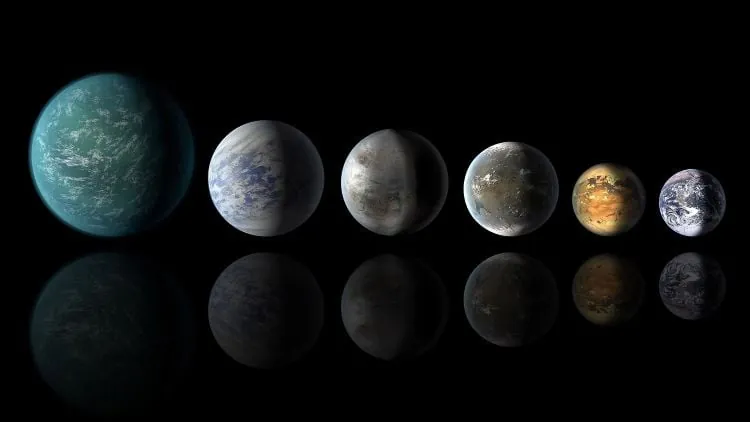
Unlocking the Secrets of Exoplanet Life: The Power of Land Detection
2025-07-30
Author: Jacob
Why Detecting Land on Exoplanets Matters
Could identifying land on distant exoplanets hold the key to uncovering extraterrestrial life? A groundbreaking study aims to shed light on this pressing question. Researchers are diving deep into how land detection could help distinguish between genuine life-supporting planets and so-called 'waterworlds'—exoplanets believed to be engulfed in oceans that could mask their true composition.
The Quest for Clarity in Exoplanet Classification
These misleading 'waterworld' signatures often appear when data indicates an exoplanet possesses vast, deep oceans—upwards of 50 Earth oceans! The study's objective is to sharpen the classification techniques for exoplanets, specifically focusing on whether they might harbor life, either in familiar or entirely unknown forms.
Tools of the Trade: Harnessing Spectral Data
Utilizing advanced spectral data from the United States Geological Survey (USGS) library, the research team explored the potential of the proposed Habitable Worlds Observatory (HWO), a next-generation space telescope. Their findings suggest that for HWO to effectively detect land masses on rocky exoplanets, it would require a telescope approximately 8 meters (or 26 feet) in diameter, with particular attention to signal-to-noise ratios at visible and ultraviolet wavelengths.
Reflected Light Spectroscopy: The Game Changer
The study concludes that detecting land through reflected light spectroscopy could be pivotal. It enables HWO to eliminate false positives related to oxygen biosignatures, which can arise from deep ocean environments that suppress oxygen sinks. Certain land surfaces exhibit a distinct positive reflectance spectrum, unlike liquid water and ice, which maintain flat or negatively sloping reflectance patterns.
A New Era of Exoplanet Exploration: Enter HWO
HWO is set to be NASA's most powerful space telescope, succeeding the James Webb Space Telescope (JWST). While its launch isn't scheduled until the 2040s, scientists are currently developing the necessary technologies to ensure its success in identifying habitable worlds beyond our solar system.
Spotlight on Potential Waterworlds
Exoplanets currently considered candidates for waterworld classification include TRAPPIST-1 (40 light-years away) and Kepler-11 (2,110 light-years away), among others. Remarkably, a recent study published in The Astrophysical Journal Letters reported a steam world, GJ 9827d, located about 97 light-years away, raising intriguing questions about life on such extreme planets.
The Future of Exoplanet Studies: Countless Possibilities Await
As the countdown to confirm nearly 6,000 exoplanets in our Milky Way continues—with 219 noted as terrestrial and 1,746 as super-Earths—the ambition grows for HWO to usher in a new age. It has the potential to image habitable worlds directly, profoundly impacting our search for life beyond Earth.
What Lies Ahead in the Search for Exoplanet Life?
The discoveries awaiting us about land detection on exoplanets are still unfolding. What revolutionary insights will future researchers provide over the coming years? As we venture deeper into space exploration, one thing is clear: the excitement of discovery is just beginning. So, keep your eyes to the stars!









 Brasil (PT)
Brasil (PT)
 Canada (EN)
Canada (EN)
 Chile (ES)
Chile (ES)
 Česko (CS)
Česko (CS)
 대한민국 (KO)
대한민국 (KO)
 España (ES)
España (ES)
 France (FR)
France (FR)
 Hong Kong (EN)
Hong Kong (EN)
 Italia (IT)
Italia (IT)
 日本 (JA)
日本 (JA)
 Magyarország (HU)
Magyarország (HU)
 Norge (NO)
Norge (NO)
 Polska (PL)
Polska (PL)
 Schweiz (DE)
Schweiz (DE)
 Singapore (EN)
Singapore (EN)
 Sverige (SV)
Sverige (SV)
 Suomi (FI)
Suomi (FI)
 Türkiye (TR)
Türkiye (TR)
 الإمارات العربية المتحدة (AR)
الإمارات العربية المتحدة (AR)